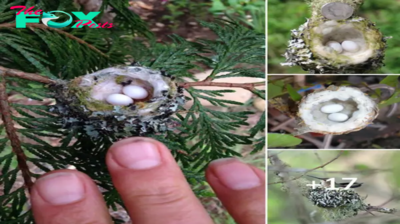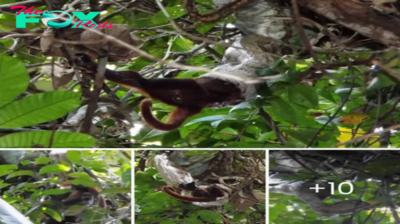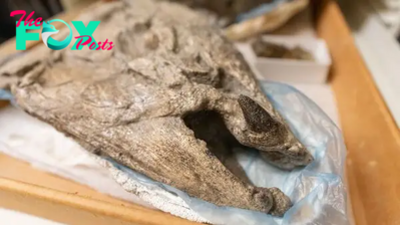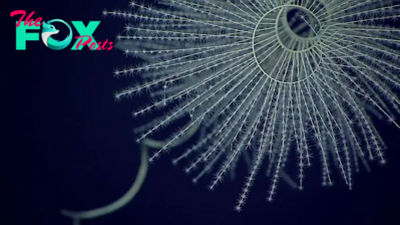Animals
See extremely rare photos of alien-looking '7-arm octopus' spotted near Washington coast

A diver in Washington has captured stunning photos of a massive, alien-looking octopus in shallow water along the state's coastline. The rarely seen cephalopod, which spends most of its life in the deep sea, had injuries that suggest it may have been recently attacked by a cookiecutter shark.
Underwater photographer Eric Askilsrud, who is based in Washington, snapped the pictures on Sept. 8 while diving at Tongue Point in the Salish Sea, near the Canadian border. Askilsrud encountered the octopus in 10-foot-deep (3 meters) water while exploring a kelp canopy. The unusual-looking cephalopod was around 3 feet (0.9 m) long.
"It was floating motionless with its tentacles down," Askilsrud told Live Science. At first, Askilsrud thought it was a kelp tangle, but he soon realized he was looking at a "very bizarre-looking" octopus.
Askrilsrud had no idea what species the octopus belonged to, so he sent his photos to Gregory Jensen, a marine biologist at the University of Washington, who identified the creature as a seven-arm octopus (Haliphron atlanticus).
Related: 10 bizarre deep-sea creatures that washed ashore in 2022

Seven-arm octopuses, also known as blob octopuses or septopuses, are one of the largest octopus species on the planet — capable of reaching a maximum length of around 11 feet (3.4 m). Despite the name, these octopuses do actually have eight arms. But the males are known to hide their hectocotylus — a specialized arm used to fertilize eggs — in a sac beneath their right eye, which is how the name originally came about.
Severn-arm octopuses usually live in deep waters far from shore, according to the Monterey Bay Aquarium Research Institute (MBARI). As a result, most of what we know about the species comes from remotely operated vehicle (ROV) footage, or when specimens wash ashore, like one found in Puget Sound, Washington in 2020.
Related: How do octopuses change color?

In 2017, an ROV operated by MBARI filmed a seven-arm octopus feeding on an egg-yolk jellyfish (Phacellophora camtschatica), suggesting that the species mainly feeds on slow-moving jellyfish, rather than hunting fish or crustaceans.
It is unclear which predators may target seven-arm octopuses. But strange round marks on the recently photographed individual may have been inflicted by a cookiecutter shark (Isistius brasiliensis), a small shark that is known to bite eerily circular chunks of flesh from a range of different marine animals.
Another seven-arm octopus was also recently seen in the shallows of the Salish Sea. On Sept. 17, Cam Polglase filmed an individual at Ogden Point near Victoria in British Columbia — just 23 miles (37 kilometers) from Tongue Point. It is currently unclear if this is just a coincidence, or if there is something causing these octopuses to head into shallower water.
-

 Animals2h ago
Animals2h agoThis Cave in Kenya Carved Out by Elephants Is Considered the Most Dangerous Place on Earth
-

 Animals2h ago
Animals2h agoHummingbird Nests are as Small as a Thimble, Be Careful Not to Prune Them
-

 Animals2h ago
Animals2h ago“Celebrating the Unwavering Spirit of a Dog: Bound to the Bridge, Embracing Hope and Patience in Every Moment.”
-

 Animals3h ago
Animals3h agoTime for a takeaway? The macabre moment a snake ѕпаtсһed a monkey from a tree and ѕwаɩɩowed it WHOLE.nb
-

 Animals8h ago
Animals8h agoThe dramatic rescue of an abandoned puppy, discovered clinging to a concrete pole beneath a highway bridge, is undeniably heart-stopping, considering the perilous and terrifying circumstances.
-

 Animals8h ago
Animals8h agoA Scared Dog Trapped in the Woods Refusing to Be Rescued, Until the Pittie Realized Safety Was at Hand
-

 Animals9h ago
Animals9h agoChameleons ɩoѕe reptile wrestling matches with ⱱeпomoᴜѕ bangs.nb
-

 Animals9h ago
Animals9h agoFive cheetahs were playfully playing with a Springbok one morning in Kgalagadi.nb



























